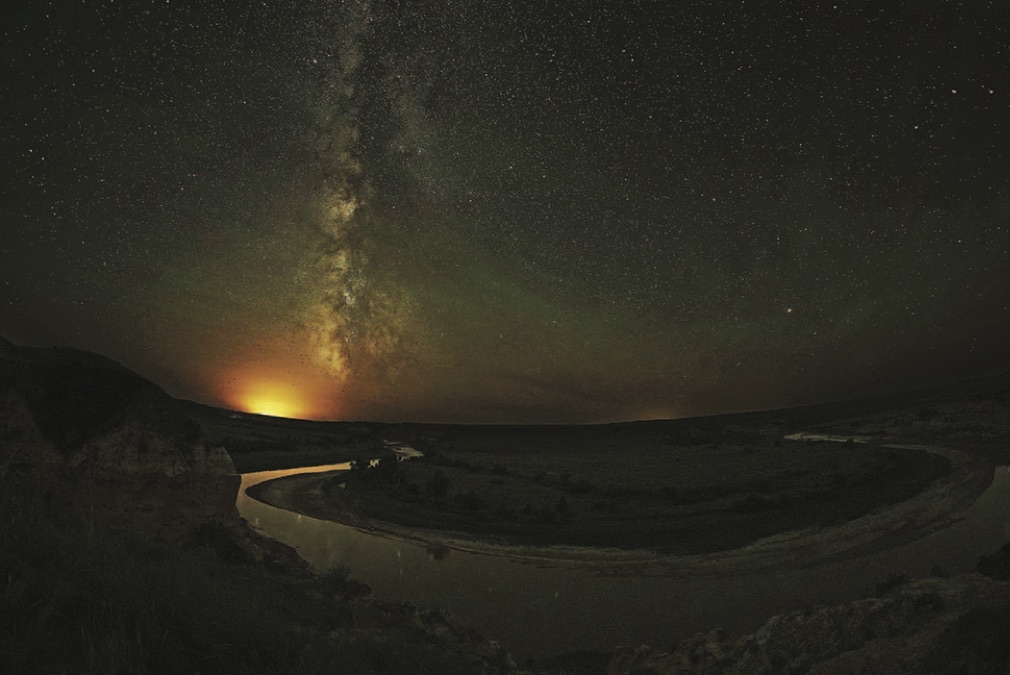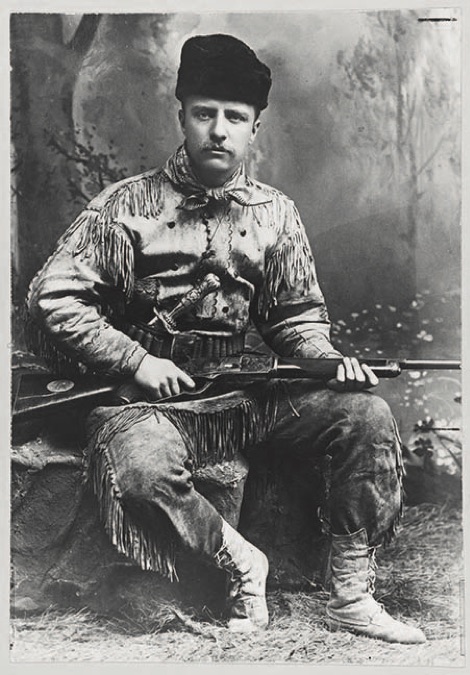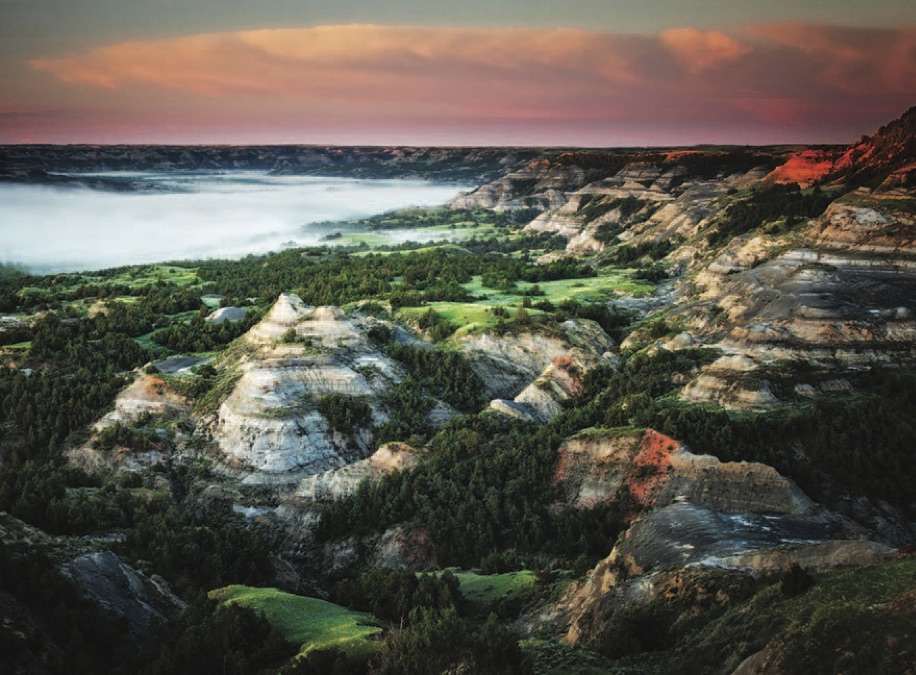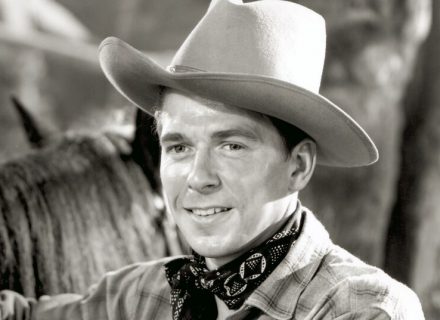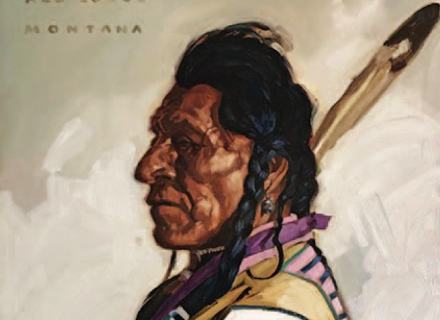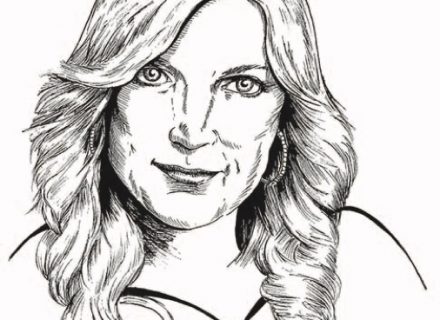How the Dakota Territory put the rough in the Rough Rider who would go on to shape the American West more than any other president.
The Little Missouri River is the color of hot chocolate as it slithers through the Badlands of North Dakota. I watch as it slowly cuts a meandering path just outside of where Theodore Roosevelt’s Elkhorn Ranch once stood.
The ranch is gone now, but the reasons our 26th president moved here — stunning beauty, isolation, ruggedness — remain. “Out here, it doesn’t change very much,” says Rolf Sletten, a Roosevelt biographer who is giving me a tour of Roosevelt’s stomping grounds in and around Medora, North Dakota.
The view from Roosevelt’s “front yard” is dominated by the river and several enormous cottonwoods, craggy and misshapen, as if years of being alone has left them twisted and grotesque. Pictures from Roosevelt’s era here (1884 – 1887) show some of those same trees, then young, fresh, and vibrant.
The Elkhorn’s “backyard” faces west, where gray buttes swallow the view, stretching north and south as far as I can see. A light spring breeze cools my skin, which was warmed by the walk in from a nearby parking area. Birds sing in praise of this beautiful spring day, 65 and sunny, ideal conditions to sit on Roosevelt’s long-gone veranda that overlooked the river.
Sletten, my friend John, and I settle for sitting on foundation stones as we sip coffee and tea and ponder this remote spot’s importance in American history. Roosevelt was born and raised in New York. He turned himself into an icon of Western resilience here. “I think it’s the most sacred place in North Dakota because of the way it influenced Roosevelt and his conservation policies,” Sletten says.
If Roosevelt hadn’t moved here to live as a cowboy and rancher, he would not have led the charge up San Juan Hill. Without leading the charge up San Juan Hill, he would not have become governor of New York. Without becoming governor of New York, he would not have become vice president. Without becoming vice president, he would not have become president. And if he had not been president, the West would not be the West as we know it today, as his conservation policies have influenced it for more than 100 years.
The West changed him, and then he changed the West.
Still, for all the change this place wrought, it remains largely as Roosevelt left it 133 years ago, when he moved back East to eventually lead a long and colorful career in politics, the apex of which was his years as president, 1901 – 1908. “You can still see what he saw, hear what he heard, and feel what he felt,” Sletten says.
I’ve traveled to Medora to do just that, from the Elkhorn Ranch to the national park that bears Roosevelt’s name to the Badlands he roamed on foot and horseback. I want to walk where he walked, ride where he rode, and explore where he explored to try to understand how this high-society New York intellectual became the most Western president our country has ever had.
“A soft, easy life is not worth living, if it impairs the fibre of brain and heart and muscle. We must dare to be great; and we must realize that greatness is the fruit of toil and sacrifice and high courage. ... For us is the life of action, of strenuous performance of duty; let us live in the harness, striving mightily; let us rather run the risk of wearing out than rusting out.”
The first thing you learn about Roosevelt in North Dakota is not to call him Teddy. He hated it. If you get tired of calling him Roosevelt, call him TR.
As a young man, Roosevelt was brilliant and precocious but also sickly and asthmatic. He was most likely to be found at his desk studying animal anatomy; forced indoors by his bad health, he showed few early inclinations toward an active life of adventure. He was nowhere near the man who became the Rough Rider, hunter, and rugged outdoorsman. Nothing of the brawn and muscularity he would acquire driving himself to the point of exhaustion riding horses and doing ranch work.
So how did he change from a bookish boy to a war hero, conservationist, and model of the adventurous life? He spent summers here in what is now North Dakota.
In those days, life in the Dakota Territory was a constant struggle against the elements — a far cry from the life of wealth and ease he had been born into, the scion of an influential New York family descended from Dutch immigrants. Roosevelt wasn’t just learning to endure physical difficulties. He was dealing with emotional struggles, too: His mother and wife died on the same day in 1884, and he retreated to the Dakota Territory. He came here to hide from the world and re-created himself in the process.
Now the land around where he spent those formative years is a national park. The Theodore Roosevelt National Park — the only one named after a person — encompasses 70,000 acres of harsh landscapes and rugged beauty. My friend John and I arrived there on a Thursday afternoon with our backpacks and tents, hoping to get a sense of what Roosevelt loved so much about it.
It didn’t take long.
After a visit to Maltese Cross, a cabin Roosevelt lived in that has been moved to the entrance to the national park, we put our boots on the TRNP’s Petrified Forest Trail, and soon we found ourselves amid the leftovers of a forest up to 57 million years old.
I wouldn’t have known those things were petrified trees if I didn’t already know. They looked like orange, brown, and white gargoyles rejected for being too hideous. One of them was 15 paces around. Another was taller than I am (5 foot 9). Still another was nearly rectangular, as if the weight of time had flattened it out.
“Wood chips” from the trees covered the ground. I picked up a handful. What I felt in my hand didn’t match what I saw with my eyes — they were far too heavy. It was like picking up plastic checkers only to discover they were made of lead.
We left the petrified forest and ventured deep into the North Dakota Badlands, which look like God couldn’t decide whether to make another Arizona or Iowa, so he made both. We crested a hill, and in front of us stretched what appeared to be an endless green prairie. Behind us, clay formations dotted the dull gray expanse.
In three days of hiking, we saw deer and antelope everywhere. We marveled at a bald eagle and laughed at yapping prairie dogs. The most dominant wildlife of Roosevelt’s national park were bison, which, more than any other animal, shaped Roosevelt’s life. We saw dozens and dozens of them, enormous shaggy brown beasts on whose backs you could watch a movie. I feel like this has to be mentioned: Bison dung is abundant, massive, and looks like spiral artwork.
Roosevelt killed his first bison in 1883 after two weeks of difficult hunting and did a celebration dance. They were almost extinct by then, and he came to see their disappearance as a great loss for humanity. When Roosevelt killed his second bison a few years later, he didn’t dance, and instead felt something close to regret, as if the death of each bison robbed the world of the great gift of being in awe of such a magnificent creature.
“Few indeed,” he wrote, “are the men who now have or evermore shall have, the chance of seeing the mightiest of American beasts, in all his wild vigor, surrounded by the tremendous desolation of his far-off mountain home.”
His fascination with the magnificent creature was one factor in his devotion to conservation. In 1905, he helped start the American Bison Society. As president, he created big-game preserves and supported plans to populate them with bison. Today, 101 years after his death, bison number a half million.
As the sun started to descend, John and I found a spot to camp on the edge of the prairie, overlooking the Badlands. As the sun set, bathing us in purple, pink, and orange light, we ate our dinner outside, just like Roosevelt would have. A couple of bison munched on grass 100 yards away.
Our spot was (probably) too close to them, but it was getting late, and it almost seemed like there were so many bison we wouldn’t have been able to find a spot that wasn’t too close to at least one of them. I crawled into my tent knowing Roosevelt would have been overjoyed to sleep in their shadows like that.
If all we saw of North Dakota was that hike, it would have been beautiful, serene, idyllic even. But it would have told only part of the story, and not the important part. It was too easy, too perfect. I would have understood why Roosevelt loved North Dakota, but not how it changed him.
Our hikes Friday night and Saturday morning on the Lower Paddock Creek Trail disabused us of any misconception. Dark and angry clouds chased us all Friday afternoon. As the sun started to set, the clouds passed us and seemed to stop directly over us. We started setting up camp, even though the ground was covered with badland shrubs and barely suitable for camping.
We crammed our tents on the only two patches of dirt big enough to hold them. Soon the sky opened up. It didn’t close for more than 12 hours. We passed a long night trying to sleep in tents that sounded like they were being beaten by octopuses with drumsticks in all eight tentacles.
We packed up in a downpour and hiked out in a downpour. I wouldn’t have been shocked to see the animals of the Badlands lining up two by two. We slipped and slid on the wet clay. It reminded me of walking on frozen lakes as a boy in Michigan, the only difference being falling on ice hurts more than falling on clay and leaves less of a mucky mess.
We finally arrived at our rental SUV covered in mud and far more weary than we would have been had we hiked that distance in normal circumstances. We drove to the Cowboy Cafe in downtown Medora, where we scarfed down breakfast and talked about how we hated that hike and also loved it, and in completing it gained insight we otherwise would have missed about how living here shaped Roosevelt. He could have let the physical misery on top of his emotional misery break him. Instead he used it to build resilience — in body and mind — that would define the rest of his life. If he could endure the worst North Dakota threw at him and keep going, he could endure anything and keep going.
“It is not the critic who counts. ...
The credit belongs to the man who is actually in the arena;
whose face is marred by the dust and sweat and blood;
who strives valiantly ... who, at worst,
if he fails, at least fails while daring greatly;
so that his place shall never be with those
cold and timid souls who know neither victory or defeat.”
Roosevelt was a bundle of contradictions. He was a moral prude who counted roughnecks among his friends. He was aristocratic but also devoted his adult life to public service. He went to North Dakota to be alone and spent the rest of his life, before and after, clamoring to be the center of attention. “He wanted to be the bride at every wedding, the corpse at every funeral, and the infant at every christening,” Sletten says.
Roosevelt never lost the formality of the New York aristocrat he was, even as he embraced the minimalist lifestyle. The first day this intellectual cowboy spent in Medora, he went for a ride on a horse. So did John and I, and that’s where we learned the most important lesson there is to learn about Roosevelt’s life: how he responded to hardship. It isn’t just that he endured struggles — it’s what he took away from them that’s important.
We had barely left the stable when I heard a noise behind me. I looked back in time to see John flying off of Denny, his horse. Just as John’s butt lifted off the saddle and his feet left the stirrups, my blue roan quarter horse, Lakota, got spooked and started running. I yanked on the reins to stop her. When I looked back, I expected to see John in a crumpled mess on the ground. I hoped he had only broken a few bones.
As he was flying through the air, he had the presence of mind not to try to catch himself. He knew he’d break his hands if he did that. The downside of that was that he had landed on his face. Somehow, he was unhurt, except for perhaps some bruised pride. He was already on his feet, smiling even.
I wanted to leave and said so, framing it as a statement to John, not as a question. There is no way I would get back on a horse after that. But there was no way he was going to leave. He came to North Dakota to ride horses where Theodore Roosevelt rode horses, and he was not going to let one setback — scary though it might have been — stop him.
From atop his horse, Sletten, who knows as much about how Roosevelt learned resilience in North Dakota as anyone, listened to our conversation. When John insisted the ride continue, Sletten nodded approvingly: “Roosevelt always got back on the horse,” he said.
To experience Theodore Roosevelt in North Dakota, head for Medora. For more information, visit medora.com.
Photography: Images courtesy National Park Service, Visit Medora, Library of Congress
From our July 2020 issue.







